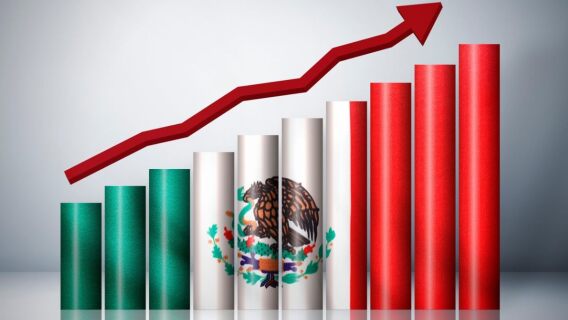There’s a stealth winner in the recent trade truce between the U.S. and China: Mexico. And judging by recent action in Mexican stocks, the market seems to agree with me.
While the Mexican economy has not been particularly strong, its stock market is in a nice uptrend and two recent trade deals, including the new NAFTA pact with Mexico and Canada, together with cost advantages, work in Mexico’s favor for several reasons.
First, China’s rise as the world’s largest manufacturer over the last few decades has been a major headwind for Mexico. We know that thousands of American firms moved manufacturing operations to China. This trend hit Mexico doubly hard since Mexican firms moved operations to China too and American firms chose China over Mexico as a manufacturing destination.
[text_ad use_post='129628']
But now, with Mexico’s wages lower than China’s, Mexico has become the low-cost manufacturing base of choice – especially for North American markets.
And while I realize we all want more U.S. manufacturing jobs, please keep in mind that Mexican exports to America already contain 40% U.S. content while Chinese exports to America have only 4% U.S. content.
In other words, a washing machine assembled in Mexico and exported to America has about 40% of its components made in America.
In sharp contrast, for products assembled in China and then exported to America, only 4% of the content is made in America—think of an iPhone, for example. Almost all of its components are sourced in Asia.
So, U.S. imports of Mexican products are 10 times better for American workers when compared with Chinese imports.
Improved investment and trade in Mexico could reduce some immigration pressures by creating better jobs in Mexico and America while also expanding U.S. exports to Mexico and South America.
And with the new NAFTA deal passing Congress, a cloud of uncertainty has been lifted.
Analysts are calling it “near shoring,” “in shoring” or “reverse globalization.”
The U.S. is already the biggest foreign direct investor in Mexico, accounting for 45% of all foreign investment, according to the State Department.
How will all this shake out and what will American Congressmen (and U.S. labor groups) think of U.S. multinationals shifting some manufacturing from China to Mexico?
American firms still export three times as much to Mexico as they do to China. And Mexico, in turn, sends 80% of its exports back across U.S. borders. In comparison, Mexico’s exports to its giant neighbor to the south, Brazil, accounted for only 1% of its total exports.
Mexico has also launched more free-trade agreements that involve in excess of 40 countries – more than any other country and enough to cover more than 90% of the country’s foreign trade.
Another plus is Mexico’s very favorable demographics, where almost half of the country’s population is what we would term working age, and 27% of Mexicans are under the age of 14.
Most importantly, Mexican stocks are in a clear uptrend.
To gain direct and broad exposure to Mexican stocks, one could go with the iShares MSCI Mexico Capped ETF (EWW). An even more aggressive play into Mexico’s growth is a different ETF I just recommended to my Cabot Global Stocks Explorer advisory subscribers. It follows a basket of leading Mexican stocks but seeks to move three times (200%) the daily price change in the index – both up and down. Lately, that extra volatility has been a good thing as Mexican stocks have been rising.
To learn the name of this aggressive Mexican ETF, click here.
Editor’s Note: This post was excerpted from a recent issue of Cabot Global Stocks Explorer.
[author_ad]

